Food Glorious Food!
It all starts with your food. Food occupies the most central role in our existence. To think that we aren’t predisposed to misusing this substance is naïve at best, and gross negligence at worst. Food is our most valuable commodity and can be our worst nightmare. As always, when there is money to be made from a legal commodity, new and interesting ways will always be found to create a market for something more for us to eat. What follows is an outline of why we eat the way we do based on my clinical experience from the past 20 years. I will go over some of the important supplements that can be used and why they are used in addition to food sources that are rich in these nutrients. Keep in mind that you don’t have to take all of these supplements. However, knowing how they work and what foods that they are in can provide you with a rough road map on what you may need. In addition, I’ll also talk about healthy ways to approach food and cooking. You may already know a lot of this information already, but there are also some areas that aren’t common knowledge these days due to the rise of the convenience store and it’s impact on what we eat. At first, let’s look at the way Asian medicine classifies food as ancient wisdom is still highly relevant in our modern world.
by the end of this chapter, I hope you’ll understand how food works, as well as how to enjoy what you eat in a more considered way. We’re going to do this in a way that avoids the common mistake of applying ethics to food (good food/bad food) that can create a complex. Instead, we want to focus on healthy eating and how and why that is.
To start with, let’s examine how the flavors are considered in Chinese medicine. I’d like to introduce this because it has been demonstrated that when taste profiles are of only one or two types, they can make imbalances in your biochemistry occur (just think about what too much sweet foods can do…ie: cause diabetes). We will get into the specifics of it later.
In Chinese Medicine, food is classified into categories based on its taste profile. The tastes are: Salty, Sweet, Sour, Bitter, Spicy, Bland and Umami (which could technically be classified as a combination of tastes and textures…think “Savory”). In every balanced meal, every taste should be present. When they aren’t, bad things happen. Taste functions are as follows:
Salty- Purging and softening and travels in the blood[i]. Which is why excess consumption of salty things is not a great idea when there are diseases of the blood (which is what Chinese medicine classifies heart disease and high blood pressure as).
Sweet- Tonifies, harmonizes and moistens and travels in the flesh.[ii] Diabetes, cancer and obesity are classified as flesh diseases in Chinese medicine. This makes a certain amount of intuitive sense, as the abuse of this taste, would result in an over-tonification (enhancement) of the flesh, which would be akin to increased fat (and that means obesity, or tumors). Guess what taste all alcohol is classified as?
Sour- this taste is astringent and prevents abnormal leakage of fluids and prolapses of organs and travels in the sinews[iii]. So…during states where you are having tremors (the shakes, i.e.: withdrawal), or are too dehydrated (aka: hung over), or are experiencing water retention, it would be best to avoid too much of this one.
Bitter- This taste drains and dries and travels in the bones[iv]. This one is sort of like a mild antibiotic that helps to lessen inflammation. This taste, is the one that people like the least, and as a result, consume the least. This is a pity as it helps to mitigate the mayhem that the sweet taste causes when consumed in excess.
Spicy- This is the mover and the shaker of the tastes. Spicy substances disperse and move and travel in the Qi (circulation)[v]. Circulation of all fluids increases when we eat spicy things, which is why people in tropical climates tend to eat spicy food (it makes them sweat). It is also great for lung function (which is why asthmatics tend to like spicy food). Too much of this taste causes dehydration (and a flaming tongue!).
Bland- No one in their right mind wants a steady diet of food that tastes bland as it is synonymous with BORING! However, the bland taste drains dampness (aka swelling)[vi]. How does it do this you ask? Peeing.
Umami (aka Savory)- Savory isn’t actually a taste so much as a combination of taste and texture. The right combo of sweet, salty, fat content (because fat is delicious!), and a touch of the others with the exception of bland, is what this taste/texture is all about. This is also the most researched thing in food science.
For example, have you ever opened a bag of ranch potato chips? Note how easy it is to power through the bag in one sitting. How about Chicago-style popcorn (or as I like to call it “crack corn”)? I can’t freak‘in stop, and chances are, neither can you. However, NEWS-FLASH: you are not in control! These junk foods are engineered to be irresistible so that eventually, you’ll have an ass, belly or bust the size of the rock of Gibraltar, and then have a WTF moment and ask yourself what happened. For a great book describing the way foods like these mess with our heads, read Fat Chance by Dr. Robert Lustig (He’s a pediatric endocrinologist).
Rules
If there were two rules about diet that everyone should more or less follow, it would be these:
1. Obey your climate and season.
Have you ever heard of a vegetarian Inuk (or Arctic Dweller)? You never will. Environment dictates what you should eat. Up in the arctic, traditional diet is blubber, internal organ meat, intestinal contents, bone grease, the whole animal. There aren’t fresh veggies and “unhealthy whole grains” up there. Likewise, vegetarian diets came from the tropics where there are up to three harvests per year, and contrary to popular belief, tofu steaks don’t make up the bulk of the protein requirement (insects, eggs and intermittent organ meats do).
As far as seasons go, we don’t tend to feel like having a big piece of meat on a sweaty hot mid-summer day. Summer is the season that we would rather have less meat and more salad (don’t get me wrong, I love BBQ!). By the same token, we would rather have more meat and less salad and raw veggies in winter when it is cold. This is due to something called thermogenicity. Every food has a heat signature. Meats and spices are hot, fruits and veggies are cold (according to Chinese medicine). This is why you will feel really cold in winter if you are a vegetarian, or hot in summer if you are a carnivore.
2. Obey your dentition (teeth)
You don’t have strictly herbivore’s or carnivore’s teeth. You are an omnivore. This means your diet should be a bit of everything natural.
Notice I didn’t say everything. All those engineered foods that we crave in the combini are a figment of “Big Food’s” imagination. Mother nature never intended for you to eat gummies, white bread strawberry and whip cream sandwiches and colas or margarine, or vegan friendly hamburger patties ad infinitum. Cook your food from scratch. What this entails is essentially a scale of foods which can be classified according to something called the NOVA food classification system. This system was developed by Dr. Carlos Monteiro and colleagues at the Center for Epidemiological Studies in Health and Nutrition, School of Public Health, University of Sao Paulo[vii]. It is basically a grouping system for the level of food processing with 4 groups:
Group 1: Unprocessed or minimally processed foods.
These foods are obtained directly from plants or animals and do not undergo any alteration following their removal from nature.
For example:
Group 2: Oils, fats, salt, and sugar.
These are used in small amounts for seasoning, cooking foods and to create different recipes. Provided that they are used in moderation along with group 1 foods, they are fine and won’t make the foods nutritionally unbalanced.
For example:
Group 3: Processed foods
These are foods manufactured by industry using salt, sugar, oil, or other substances (group 2) added to natural or minimally processed foods (group 1) to preserve or make them more palatable. They are made directly from foods and are recognized as versions of original foods. They are usually side dishes and have 2 or 3 ingredients.
For example:
And…
Group 4: Ultra-processed foods (what I like to call “Franken-foods” after Frankenstein)
These foods are industrial formulations (made in a lab) entirely or mostly from substances extracted from foods (oils, fats, SUGAR, starch and proteins). They are derived from food constituents (hydrogenated fats and modified starch), or synthesized in a lab from food substrates or other additives (flavor enhancers, dyes, additives that make the food SUPER-palatable). Manufacturing techniques include extrusion (goo from a tube), moulding (same goo made into a shape and fried -ie: chicken nuggets). Beverages can also be ultra-processed. This group of “foods” actually contains very little natural food at all.
For example:
The “Golden Rule” here is to always prefer natural or minimally processed foods and freshly made dishes and meals to ANYTHING in Group 4. Although these foods are everywhere, you should avoid them. You can do this by shopping around the periphery of the supermarket (where all the Group 1 & 2 foods are), and try to stay away from the middle of the store (where all the Group 3 & 4 foods are). If you do decide to eat Group 4, it should only be about 7% of the time.
Also, when I say cook your foods from scratch, what I mean is open a recipe book and start cooking your food again. If you can’t remember how to do this, you have 2 choices: 1. Go onto YouTube and watch all the great cooking videos then try cooking them, 2. Go and visit grandmother for a course in how she cooks (I am sure she would love a visit). When you eat out at a restaurant, try to pick a small non-chain restaurant or pub as they generally prepare their foods from groups 1 and 2.
3. Don’t eat dessert for breakfast
Although it happens less in Japan compared to other countries, boxed breakfast cereal is basically a vehicle for added sugar. Sugar for breakfast is perhaps one of the worst things that you can consume as it sets up an insulin roller coaster ride that ends in unstable blood sugar as a norm.
Sugar (also called sucrose) does some very harmful things to the body. Essentially it is a molecule composed of glucose (which the body can use), and fructose (which causes all the problems and is also what makes sugar sweet). Fructose essentially gets converted to fat in your liver and speeds up the rate at which your cells age. It also causes your liver to become insulin resistant, which leads to diabetes and speeds up cognitive decline and cancer formation.
Fructose can also lead to the breakdown of the intestinal barrier, which leads to “leaky gut syndrome”. This can cause attention problems, food sensitivities and mood swings in children[viii].
If you are getting complaints from the school teachers about your child’s disruptive behavior at school, look no further than the sugar that was consumed at breakfast. The answer is simply the traditional Japanese breakfast (miso soup, salmon or eggs or natto, and brown rice). This breakfast is nutritious, stabilizing of blood sugar, and ideal for maintaining a healthy weight.
The number one killer of all good dietary intentions is boredom. So don’t get bored. Easiest solution: get a few of the following cookbooks and work your way through them:
i. 500 Low Carb Recipes or Paleo/ Primal in 5 ingredients or lessboth by Dana Carpender
ii. Paleo Comfort Foods by Julie & Charles Mayfield
iii. Mastering the Art of French Cooking by Julia Child, Simone Beck and Louisette Bertholie
iv. Atkins Carbohydrate Gram Counter by Robert Atkins
v. I hear the internet has great cooking videos and recipes….
The first books are for those who are not yet foodies and just want to lose weight and feel good with a minimum amount of effort. The next two are for the foodies (both with and without gluten). The last one is to help you figure out carb counts for different foods. If you pair it with the first book, you won’t have any guess-work.
Veganism?
Do yourself a favor, and don’t do it. Vegans (and most vegetarians) end up inducing multiple nutritional deficiencies due to a diet that is full of cleansing foods, but have none of the nourishing foods[ix]. The nutrients that they are short on include Vitamin B12, Vitamin A, Vitamin D, Vitamin K2, Zinc, Magnesium and Cholesterol. I mention cholesterol here as a vitamin due to the fact that these diets have very little (unless butter, eggs and lard are consumed). There is a reason why vegans and many vegetarians who don’t take supplements are depressed, suicidal, pale, sick and have low libido.
That reason is cholesterol. Your body uses cholesterol as a backbone to build all hormones. No cholesterol, no sex hormones, no sex. Cholesterol is manufactured in the liver and is also used for cell membranes (for new cells), for bile acids (for fat digestion) and it plays a vital role in vitamin D production (to help with lots of things like immunity, bone strength, mood, etc.)[x]. As for many of the celebrities and influencers out there who preach the gospel of vegan, they are about 99% incorrect, and scientifically challenged. In the event that you disagree with me, read “Nutrition and Physical Degeneration. A comparison of primitive and modern diets and their effects.” By Dr. Weston A. Price (who was a dental surgeon). What this book studies and speaks about is the fact that all pre-contact indigenous people (pre-1930s) had NO chronic diseases, crooked teeth (or cavities) or skeletal deformities if they were eating their traditional diets (which were hunter-gatherer diets). As soon as they switched to modern diets (refined white flour, sugar, alcohol, tobacco etc.) they began to have all the chronic diseases which we deal with today. Modern hyper processed diets with all the lack of minerals and nutrients as well as food additives, preservatives and even pesticide residues have caused our biochemistry to become fundamentally altered and always in a state of detoxification and deficiency.
I’ve said it before and I’ll say it again, “In nutritional biochemistry, there is no free lunch.” (which basically means that you can’t get away with bad behavior forever without any consequences). As far as cholesterol goes, there are several types. Generally, the NIH recommends that men begin measuring their cholesterol levels by age 35 and women by age 45. Then if results are normal, follow up tests are usually done every five years.
HDL or high density lipoprotein is called the “good” cholesterol as it carries away excess cholesterol away from the arteries and back to the liver for processing. Although HDL’s target range in the blood is 40-50mg/dl for men and 50-60mg/dl for women, I have always liked to see a target range greater than 60mg/dl.
LDL or low density lipoprotein is considered to be the “bad” cholesterol as in excess amounts, it carries cholesterol away from the liver to the tissues. While this is not bad in and of itself, if too much is being carried, it increases the chances of it becoming oxidized, which can lead to arterial plaque formation (and heart disease). It’s target range in lab tests is generally 100mg/dl or lower.
VLDL or very low density lipoprotein is mostly composed of triglycerides and some cholesterol. It also shuttles triglycerides and cholesterol around in the body and can get oxidized to form plaques.
Triglycerides are the main lipid constituents in the blood and are one of the body’s main energy sources. They are stored in fat cells when they are not needed for energy. When you consume too much sugar (especially the fructose part mentioned earlier), your triglycerides will rise, leading eventually to heart disease, diabetes, insulin resistance, metabolic syndrome and liver disease. Generally triglyceride levels are measured with the target range being 50-100mg/dl.
However, in my practice in Canada, cholesterol was rarely measured at all. The reason? The biomarkers CRP (C- reactive protein), homocysteine, vitamin D and magnesium gave a far better picture of cardiovascular health than the cholesterol measurements.
C-Reactive Protein
Basically this is a biomarker for acute and chronic inflammation in the whole body from many diverse causes (less than 1mg/l is considered normal). We normally start here to see how much inflammation you have, then zoom in on the cause.
Homocysteine
Homocysteine is generated when the amino acid methionine (found in meat, fish and dairy products) is metabolized and used by the body to maintain its tissues. When there are enough B vitamins (B1, B2, B3, B5, B6, B12, Folate etc.) in your diet (B complex vitamins), homocysteine is recycled to methionine. When there aren’t, the excess homocysteine damages arteries, causes blood clots, increases Alzheimer’s disease risk, dementia risk and kidney disease risk.
Vitamin D
Aah, this is one of my favorite vitamins (which is actually a hormone). Also called the sunshine vitamin (because direct sun exposure on your skin from May to September will cause your skin to manufacture vitamin D from cholesterol, which makes cholesterol levels go down). This vitamin helps calcium to be absorbed from the intestines which is important for bone strength. However, it’s benefits don’t stop there. It is also essential for immune function, heart and blood vessel health, insulin regulation, mood and mental health stability and many more functions. The reference range of this vitamin in Japan is 30-50ng/ml (which is far too low for my liking when you consider that in Canada, our reference range is 60-90ng/ml which is far better). In Japan (as well as most of the world), vitamin D levels are deficient, causing many of the above mentioned functions to be inadequate, which is why I recommend that everyone take this one or get 10-20 minutes of bathing suit (aka full body) exposure per day from 12-2pm from May to September. Since this is impractical for most people who are employed, that means a supplement is required. (see the nutritional protocol at the end of this chapter in part 2).
Magnesium
My favorite mineral! Magnesium is one of six essential minerals that we require for optimal health (the others are: calcium, phosphorus, sodium, potassium and chloride)[xi]. It is required by over 600 enzymes and 200 co-enzymes in the body and is necessary for bone formation, muscle activity, nerve transmission, energy production, blood pressure regulation and many more things. Magnesium’s functions are so diverse that pretty much every body system uses it. It is also deficient in almost everyone globally, due to the consumption of all the substances in this book. The symptoms of low magnesium are very numerous and include: muscle spasms and pain, migraines and headaches, muscle twitching, restless legs, muscle weakness, fatigue, irregular heartbeat, loss of appetite, nausea, anxiety, depression, decreased cognitive ability, bone loss, insomnia, constipation, blood sugar instability, high blood pressure, kidney stones and many more. Although we can measure blood levels in the serum, they aren’t necessarily accurate as they don’t tell us what our tissue stores are. We would usually rely on what symptoms people had to diagnose deficiency (the above list) and then recommend a trial of the supplement (see the protocol at the end of the chapter in part 2).
Sugar
This substance should really be classified as a drug, as that is how it functions. It is truly the godzilla in the kitchen, that should be locked up in a pharmacy. And it isn’t just us that loves to over use this substance. All species, if given the opportunity, will over use sugar. Mother Nature had the right idea when she locked this substance up tight in fruit and made it available only seasonally, to prevent us from abusing it. Then, our species dealt her a “one-up” and separated it out, via processing, or started up import-export businesses to circumvent this. Now, instead of just autumn, we can get this stuff 24-7 in soft drinks, McDonalds (yeah, its in here too), candy bars, or most other processed food you can think of.
The big problem with sugar is that it is half fructose. Sugar (or Sucrose as the molecule is called) is a disaccharide (meaning that it is two forms of sugar stuck together in one molecule: glucose and fructose). Our body knows how to use glucose, but we can only handle a very small amount of fructose. Fructose essentially cirrhoses our liver if we have too much of it (your liver essentially turns into fois-gras). Fructose also causes us to gain weight via gaining fat. Since too much fructose leads to so many poor health conditions (mentioned earlier), it should actually be labeled as a drug in my opinion. As such, we should say a few things about using it in the proper dose.
Dose:
I’m not going to be a total blow-hard when it comes to enjoying stuff that sugar is in, but, if you are diabetic it is better for you to stay away from sugar in ALL its forms (candy, processed food, alcohol etc.). Here are some alternatives:
Stevia (the plant derived extract)- super sweet and a little is more than enough. This stuff has an interesting side effect, in that it lessens heartburn. Put this stuff in coffee, yogurt etc. You won’t need much more than a few drops as it is very sweet. It also won’t spike your blood sugar if you are concerned about that.
Xylitol- has gotten a bad reputation in some countries for reasons that I can’t quite fathom. For some reason, people think of it as being artificial (therefore bad). However, this is not the case. It is derived from birch tree sap and is about as sweet as sugar. It also has some interesting side effects such as preventing cavities (which should make your dentist less busy), and preventing inner ear infections (take note parents).
Notice that I’m not going to recommend the other sugar substitutes like Aspartame, Saccharine and Sucralose. The reason is that they don’t have desirable side effects, and in fact, ones like saccharine have been shown to be carcinogenic (cancer promoting). All these sweeteners (stevia and xylitol included) could potentially cause sugar addiction to get worse or stay the same. The reason for this (as Dr. Lustig in his book Fat Chance eloquently put it) has to do with a big word: pharmaco-dynamics. Pharmaco-dynamics is “what a drug does to your body”. Pharmaco-kinetics is “what your body does with the drug”. The FDA requires kinetics studies to be done on drugs, but not dynamics. Who gives a shit right? The problem is that that means we don’t know what the artificial sweeteners will do to you long term, and if the jury is out, opt out. Another problem is that when your tongue tastes sweet (from sugar or sweetener- your tongue can’t tell the difference), your brain tells your pancreas to get ready to release insulin to deal with the sugar pounding. Will that mean you will become diabetic? The science on this is still inconclusive. What we do know is that insulin makes you fat. Thus sweeteners may do this too if used in excess[xii].
As sugar is about as addictive as heroin (WTF!),
it follows that you should reduce your frequency of it’s use (ie: 2 times per month or 2 cans of cola which is about 10 teaspoons of sugar per can). Take a look at your frequency of use right now and tell me that it meets the above criteria. No, right? Just remember, if it doesn’t, all is not lost.
However, you will need to mitigate your mayhem with some supplements. You will also need to follow use rule #1 (Control your environment), which means, get it out of your house.
Join me for episode 2 next week where we go over the supplements and solutions to the above explanations.
[i] Beijing Peoples’ Health Press., (1979), “Inner Classic of the Yellow Emperor: Basic Questions (Huang Di Nei Jing Su Wen)”, p.33
[ii] Inner Classic, p.33
[iii] Inner Classic, p. 33
[iv] Inner Classic, p. 33
[v] Inner Classic, p. 33
[vi] Inner Classic, p. 33
[vii] Monteiro CA, Cannon G, Levy RB, Moubarac JC, Louzada ML, Rauber F, Khandpur N, Cediel G, Neri D, Martinez-Steele E, Baraldi LG, Jaime PC. Ultra-processed foods: what they are and how to identify them. Public Health Nutr. 2019 Apr;22(5):936-941. doi: 10.1017/S1368980018003762. Epub 2019 Feb 12. PMID: 30744710; PMCID: PMC10260459.
[viii] Lustig R., (2013)Fat Chance, Beating the odds against Sugar, Processed Food, Obesity and Disease. p.124-125. Hudson Street Press NY.
[ix] McBride N, (2017), Vegetarianism Explained, Making an Informed Decision, Maple Press, York, Pennsylvania, USA. ISBN13: 978-0-9548520-6-1.
[x] LaValle JB, (2013) Your Blood Never Lies, How to read a blood test for a longer healthier life., p. 19-31., Square One Publishers., NY
[xi] Ibid LaValle p. 312.
[xii] Walbolt J, Koh Y. Non-nutritive Sweeteners and Their Associations with Obesity and Type 2 Diabetes. J Obes Metab Syndr. 2020 Jun 30;29(2):114-123. doi: 10.7570/jomes19079. PMID: 32482914; PMCID: PMC7338497.















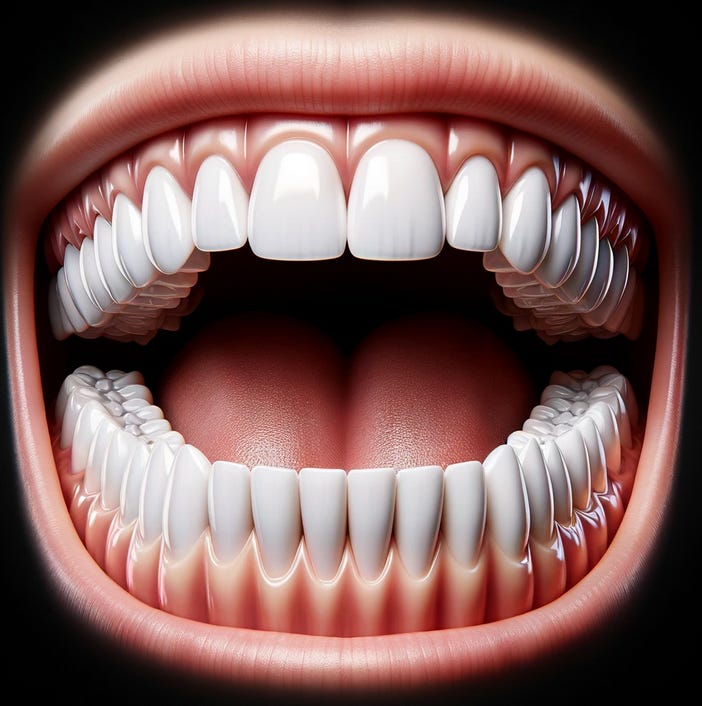





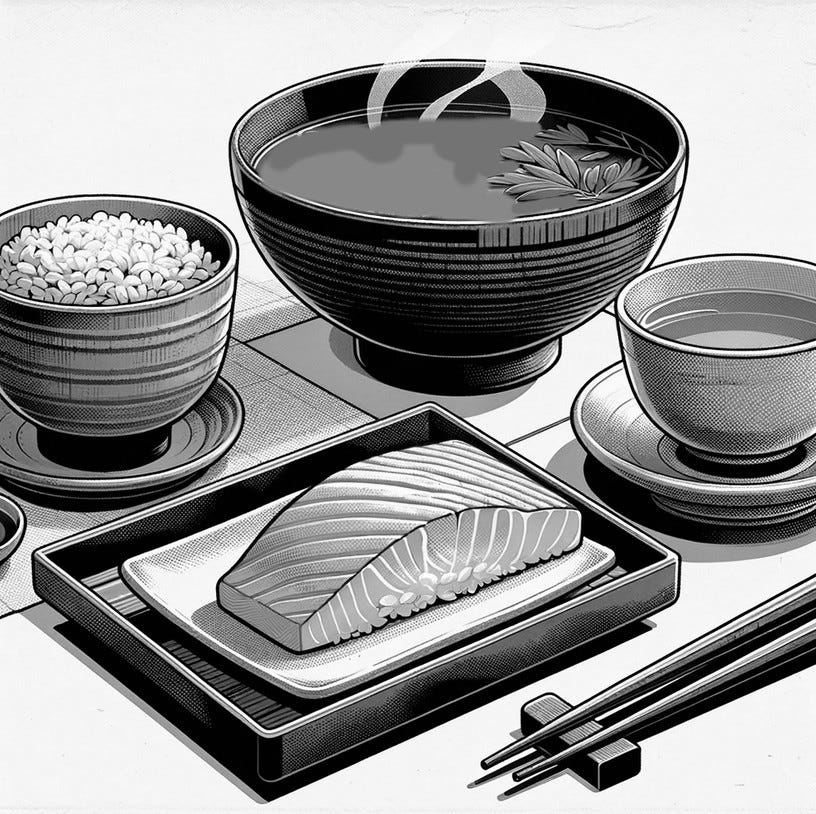



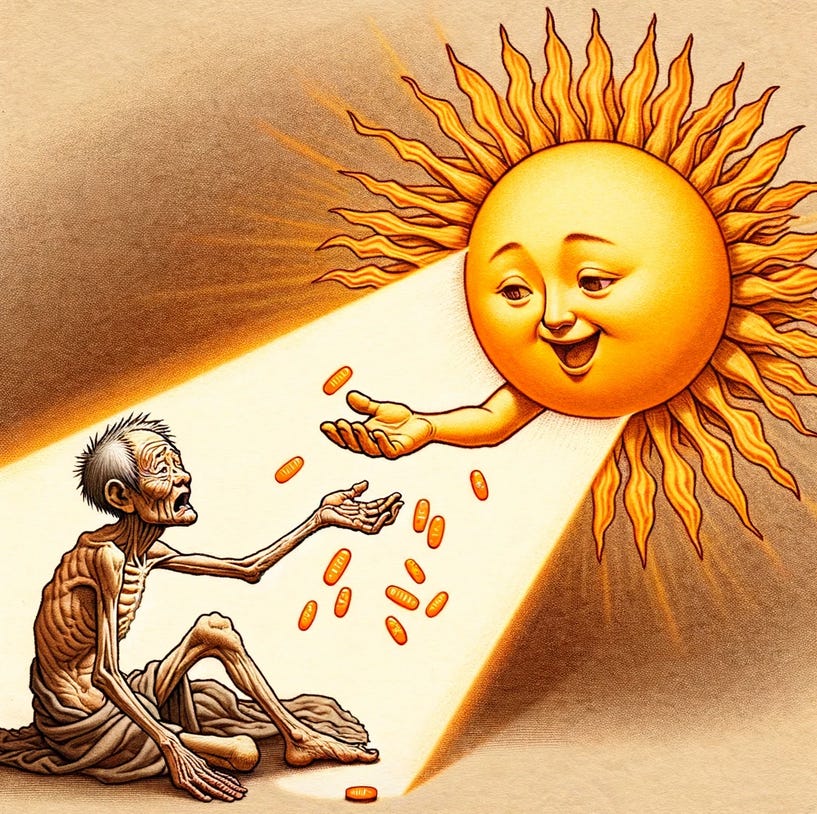
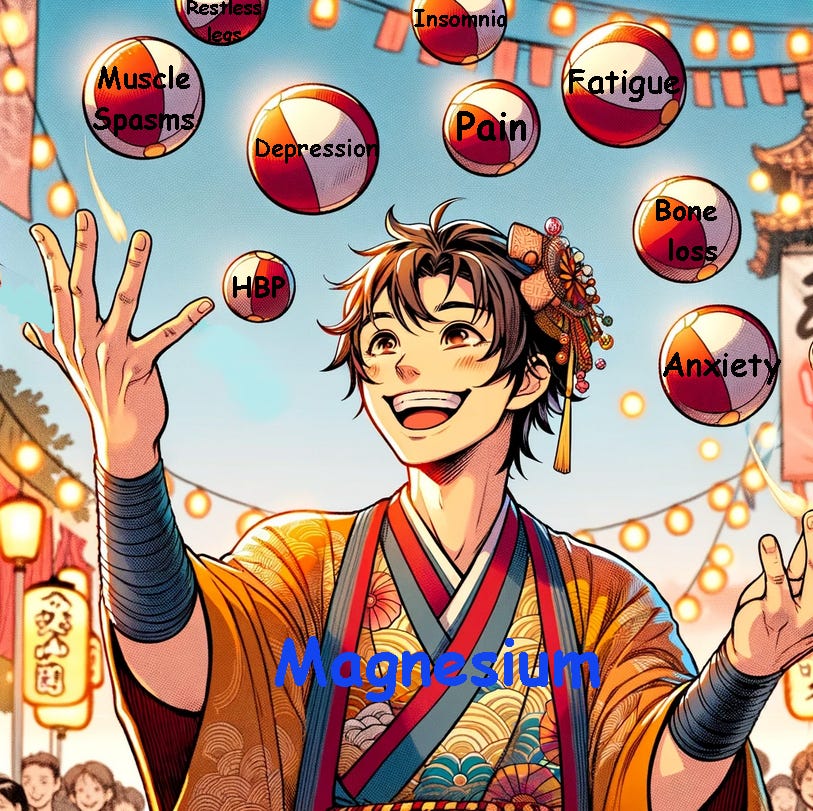

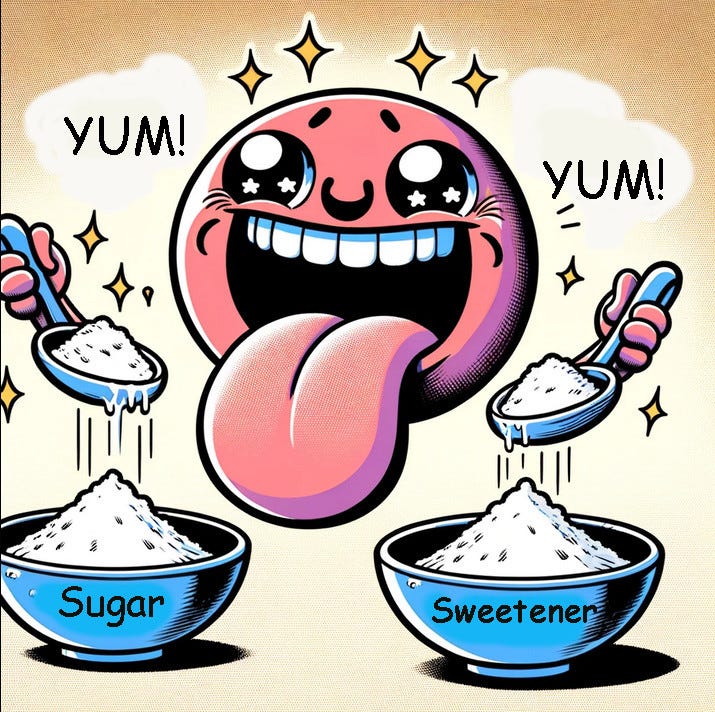

Great stuff - everyone should know about this. My husband and I have been following a low carb diet for years (on and off with some cheating with rice and potatoes - I believe food stuffs made from flour and other grains are the worst carbs after sugar). The low carb diet truly works, but also it’s a great tool to know about if you find yourself putting on weight. The best book I’ve read on the diet is New Atkins, New You by Dr Eric Westman. It should be given out for free to every even slightly overweight person who visits a doctor.